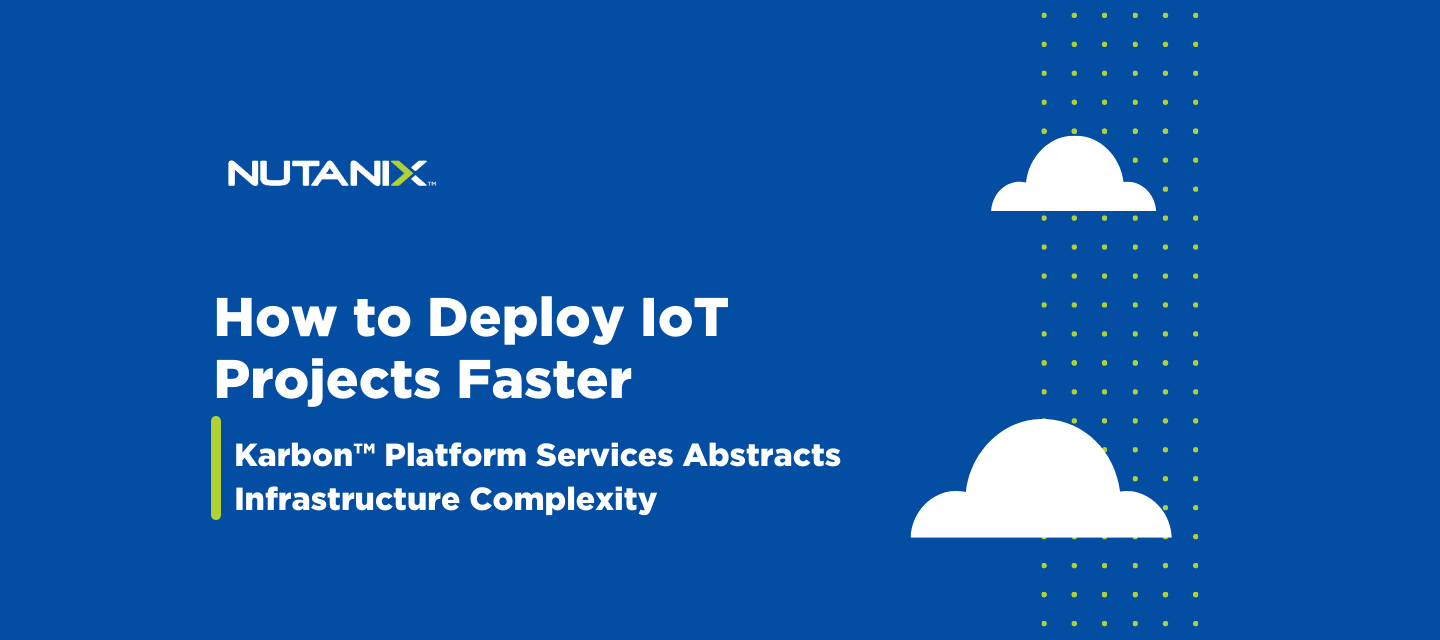The Internet of Things (IoT) landscape is a jungle. The sheer number of IoT platforms, portals, and solutions makes it extremely difficult to choose the right solution to a given problem. When working with IoT, you get used to a lot of trial and error, running tests, and doing proof of concept (POC) installations. Having a stable and flexible platform for running those installations and tests becomes crucial.
I have worked in the IoT space for several years with customers of varying organization sizes, ranging from large private enterprises, to public-sector, to small startups. Throughout my experience, I spent a disproportionate amount of time designing and setting up infrastructure for running my tests or POCs.
In this blog, I demonstrate how the Nutanix® Karbon™ Platform Services (KPS) platform-as-a-service offering simplifies deploying infrastructure, running quick POCs, and providing stable production environments for IoT use cases. KPS accelerates innovation by freeing you to focus on app development and deployment--where the value is.
Getting started
When first starting a new IoT project, my first objective is always to define the project's goal. I always first ask: What problem are we trying to solve?
Once the goal is defined, the next step is to create a project plan. Typically, the project plan's first steps involve taking inventory of the available data and data sources. Most IoT use cases start with identifying the necessary data. Data comes in many forms, such as sensor output from an industrial machine, a CCTV video feed, or another existing dataset.
Working with data
When working with data and different data sources, sampling data and trying out different collection methods is a huge benefit to the overall process of validating an IoT use case. In my experience as an IoT Solutions Architect, I have stumbled upon many different tools and platforms. One of the platforms that stands out from the crowd is the ThingsBoard ® IoT platform (ThingsBoard) . This open source platform can be used to quickly sample, transform, and visualize data for validating data and use cases.
The platform is robust enough to be used in production, thanks to its architecture and ability to scale. Many organizations worldwide have adopted ThingsBoard as their go-to platform for building IoT use cases.
The challenge
When verifying an IoT use case using ThingsBoard, I still faced the challenge of deploying the platform close to the data simply and securely. Prior to joining Nutanix, this was one of my biggest challenges. ThingsBoard is built with a modern microservices-based architecture. This meant that to deploy ThingsBoard, I needed to first deploy a cluster using Kubernetes® orchestration software (Kubernetes). In many cases, the deployment looked like this:
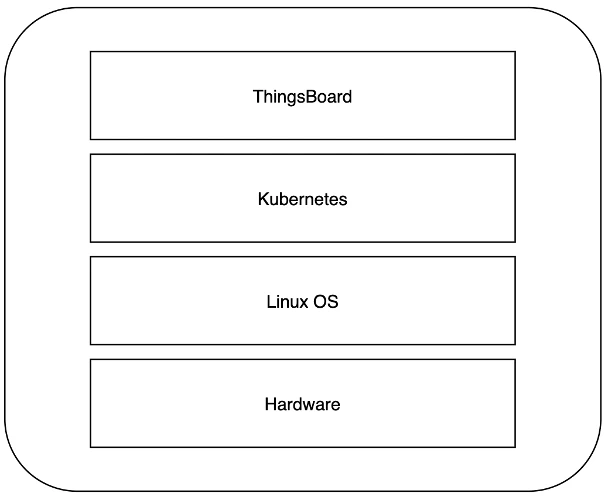
This type of deployment requires a lot of time and effort to set up and maintain over time. It also compelled me to secure and ensure that both the underlying operating system and Kubernetes cluster followed best practices and security standards.
The solution
Nutanix Karbon Platform Services (KPS) dramatically simplifies this deployment.
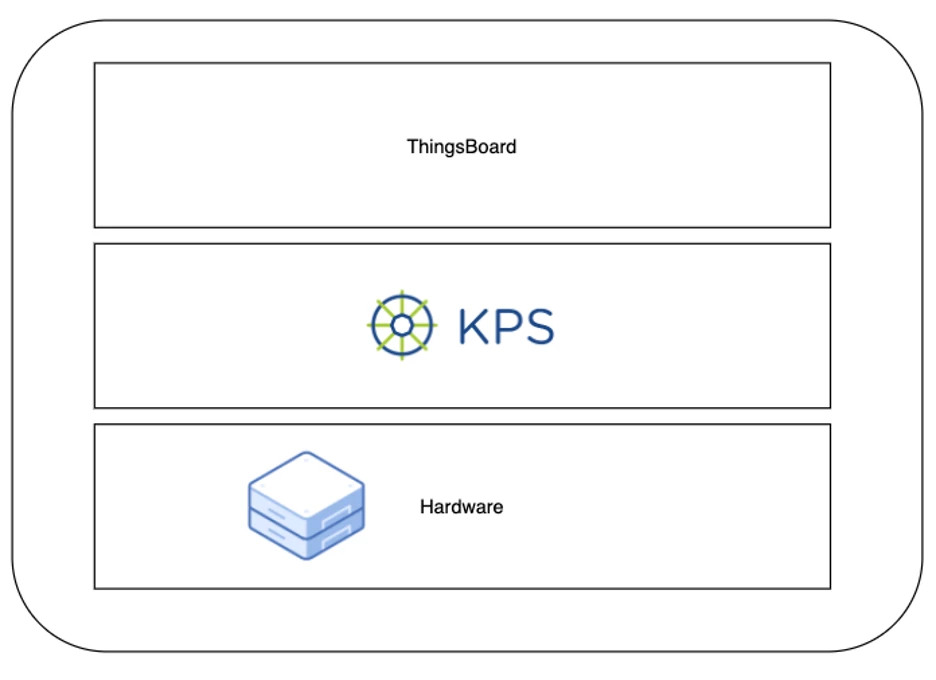
KPS is a managed platform-as-a-service (PaaS) that abstracts away the underlying infrastructure and lets you focus on developing and deploying your applications. KPS also brings useful functionality, such as a standardized way of ingesting data using built-in protocol support, support for running serverless functions, and the ability to connect the platform to the cloud in a secure and managed way.
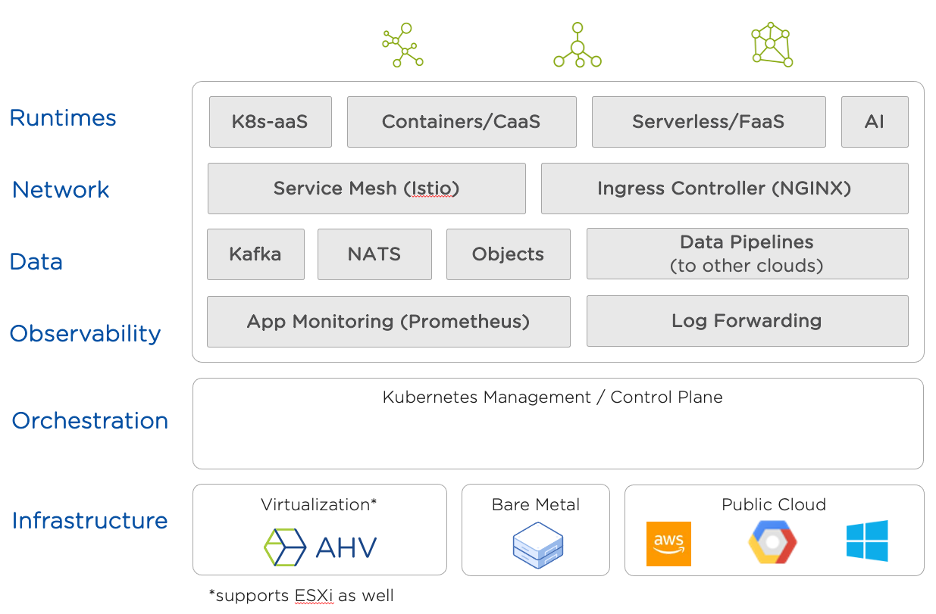
Configuring and deploying applications from a centralized point—the cloud-based control plane—also allowed me to easily manage multiple deployments.
An Example of How KPS Helps: A Water And Energy Consumption Monitoring Use Case
In this example, we collect water and energy consumption and temperature from multiple apartments in a neighborhood. The goal is to give the landlord a better understanding of individual water and energy usage across apartments. The application collects data from sensors located in apartments and apartment buildings using a LoRa radio network. We deployed a LoRa network server and ThingsBoard as applications on top of Karbon Platform Services. The LoRa network server is responsible for translating incoming data on the LoRa network to readable data. The KPS data pipeline and KPS-managed Kafka messaging bus are then used to transfer data to ThingsBoard, where the data is aggregated and visualized.
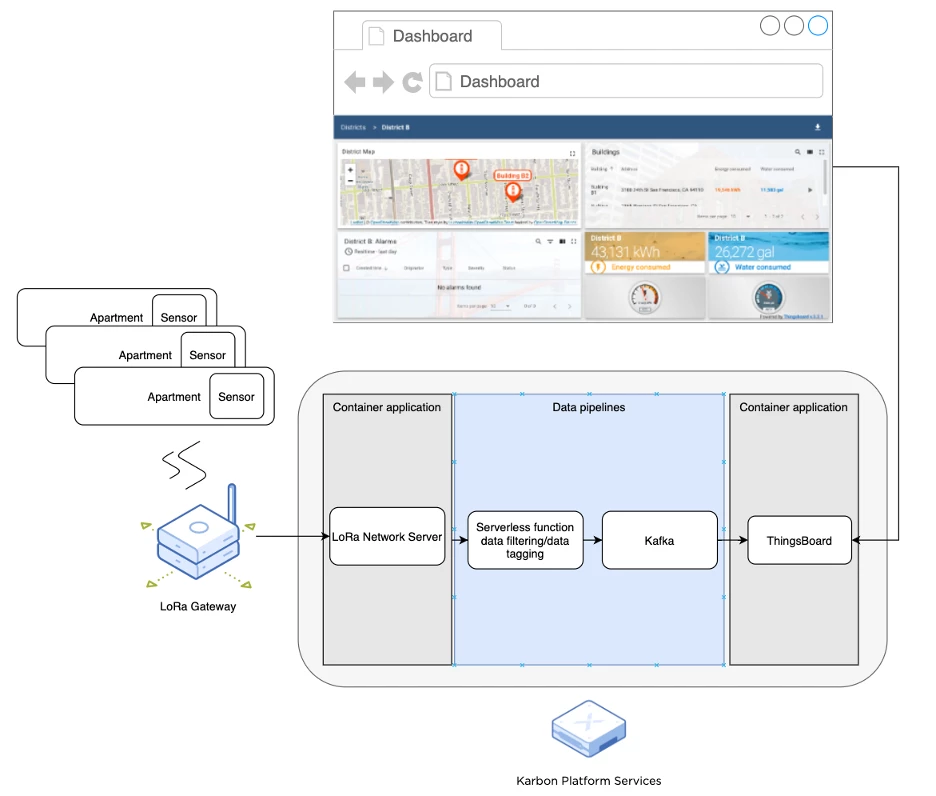
With the help of Nutanix Karbon Platform Services, we can focus on setting up data collection, the logic flows, and visualization in ThingsBoard and let KPS alleviate the burden of managing an operating system and a Kubernetes cluster. By utilizing the managed Kafka instance of KPS, we can help ensure that all data can be processed.
Get Started With KPS for IoT Now
Nutanix is deeply committed to its customers, and there are valuable resources available to users throughout the process of making design decisions, using Karbon Platform Services, and managing deployments and subsequent day-N operations.
Learn more about KPS for IoT, and sign up for a free trial of Karbon Platform Services. Let’s accelerate your cloud native IoT journey today!
This post was authored by Emil Nilsson Solutions Architect, Nutanix
© 2021 Nutanix, Inc. All rights reserved. Nutanix, the Nutanix logo and all Nutanix product, feature and service names mentioned herein are registered trademarks or trademarks of Nutanix, Inc. in the United States and other countries. Other brand names mentioned herein are for identification purposes only and may be the trademarks of their respective holder(s). This post may contain links to external websites that are not part of Nutanix.com. Nutanix does not control these sites and disclaims all responsibility for the content or accuracy of any external site. Our decision to link to an external site should not be considered an endorsement of any content on such a site. This post may contain express and implied forward-looking statements, which are not historical facts and are instead based on our current expectations, estimates and beliefs. The accuracy of such statements involves risks and uncertainties and depends upon future events, including those that may be beyond our control, and actual results may differ materially and adversely from those anticipated or implied by such statements. Any forward-looking statements included herein speak only as of the date hereof and, except as required by law, we assume no obligation to update or otherwise revise any of such forward-looking statements to reflect subsequent events or circumstances.

